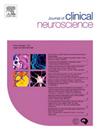Degenerative disc disease and isthmic spondylolisthesis have similar outcomes after L5-S1 anterior lumbar interbody fusion
IF 1.9
4区 医学
Q3 CLINICAL NEUROLOGY
引用次数: 0
Abstract
Background and Objective
Anterior lumbar interbody fusion (ALIF) at L5-S1 is commonly performed for both isthmic spondylolisthesis (IS) and degenerative disc disease (DDD). However, the comparative clinical outcomes of ALIF in these two conditions remain unclear. This study aims to compare the clinical outcomes of L5-S1 ALIF for IS and DDD, focusing on patient-reported outcome measures and the achievement of minimum clinically important difference (MCID).
Materials and Methods
This retrospective cohort study analyzed 93 consecutive patients who underwent L5-S1 ALIF with percutaneous posterior instrumentation for IS (n = 37) or stand-alone L5-S1 ALIF for DDD (n = 56). Patient-reported outcomes included Visual Analog Scale (VAS)-back, VAS-leg, Oswestry Disability Index (ODI), Short-Form Health Survey (SF-12), and Veterans RAND 12-item Health Survey (VR-12). Outcomes were assessed preoperatively and at the final postoperative follow-up. Changes between timepoints and the proportion of patients achieving MCID for VAS and ODI were compared between the IS and DDD groups.
Results
The two groups were similar in age, sex, and ASA scores, although DDD patients had a slightly higher BMI (29.99 vs. 27.32, p = 0.012). Preoperative VAS-back, VAS-leg, and ODI scores did not differ between groups; however, DDD patients had significantly lower SF-12 and VR-12 scores (p = 0.024 for each). At final follow-up, clinical outcomes for VAS-back, VAS-leg, ODI, and VR-12 were comparable between the groups, though DDD patients had slightly worse SF-12 scores (−6.7, p = 0.021). Improvement from baseline to final follow-up was similar for both groups, and the proportion achieving MCID for VAS-back, VAS-leg, and ODI did not differ significantly.
Conclusion
Despite inferior preoperative and final postoperative scores, patients with DDD experienced similar clinical improvement and outcomes after L5-S1 ALIF compared to patients with IS. Moreover, DDD patients were equally likely as IS patients to achieve MCID at final follow-up, suggesting that ALIF is an effective treatment option for both conditions.
求助全文
约1分钟内获得全文
求助全文
来源期刊

Journal of Clinical Neuroscience
医学-临床神经学
CiteScore
4.50
自引率
0.00%
发文量
402
审稿时长
40 days
期刊介绍:
This International journal, Journal of Clinical Neuroscience, publishes articles on clinical neurosurgery and neurology and the related neurosciences such as neuro-pathology, neuro-radiology, neuro-ophthalmology and neuro-physiology.
The journal has a broad International perspective, and emphasises the advances occurring in Asia, the Pacific Rim region, Europe and North America. The Journal acts as a focus for publication of major clinical and laboratory research, as well as publishing solicited manuscripts on specific subjects from experts, case reports and other information of interest to clinicians working in the clinical neurosciences.
 求助内容:
求助内容: 应助结果提醒方式:
应助结果提醒方式:


